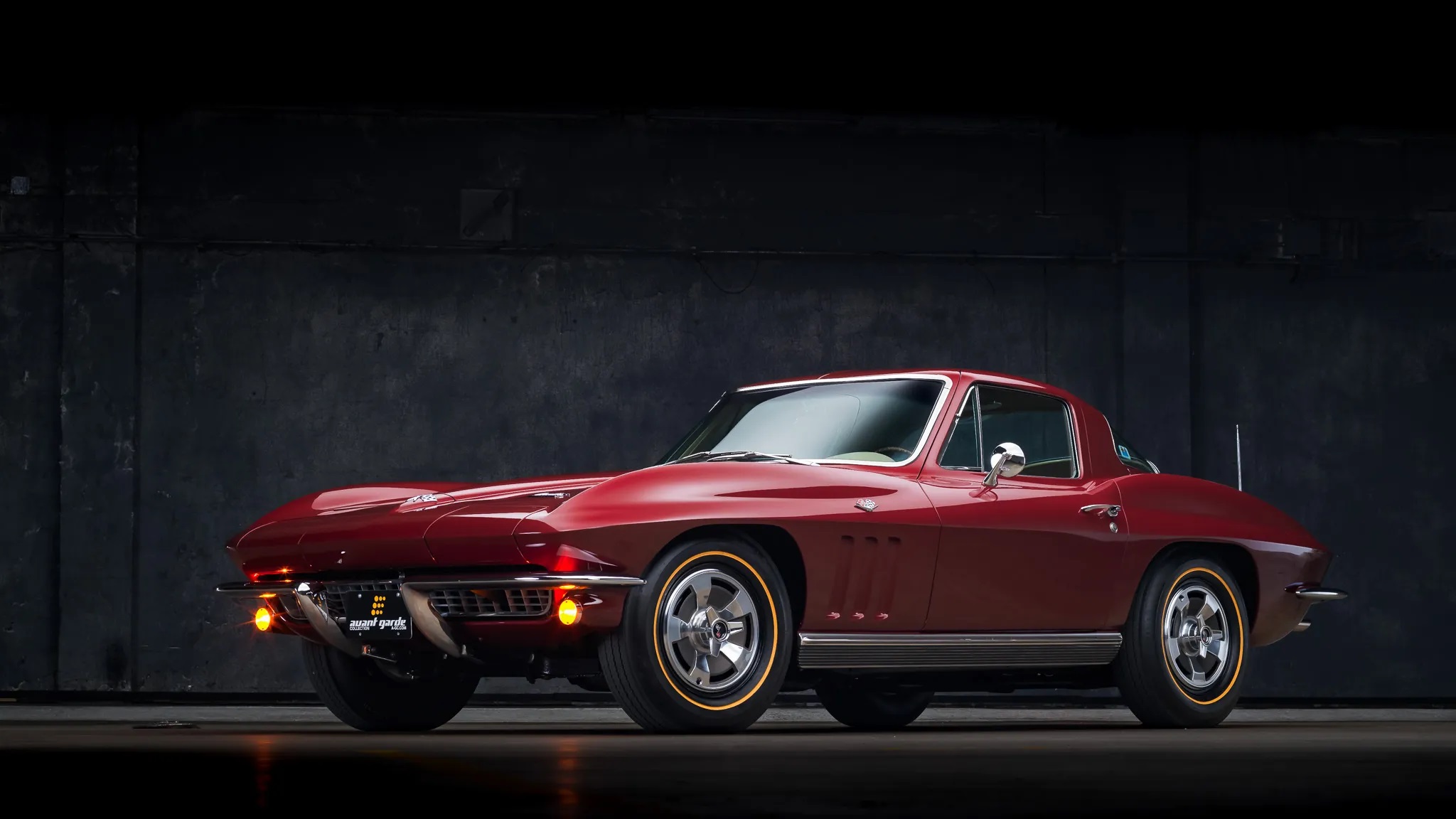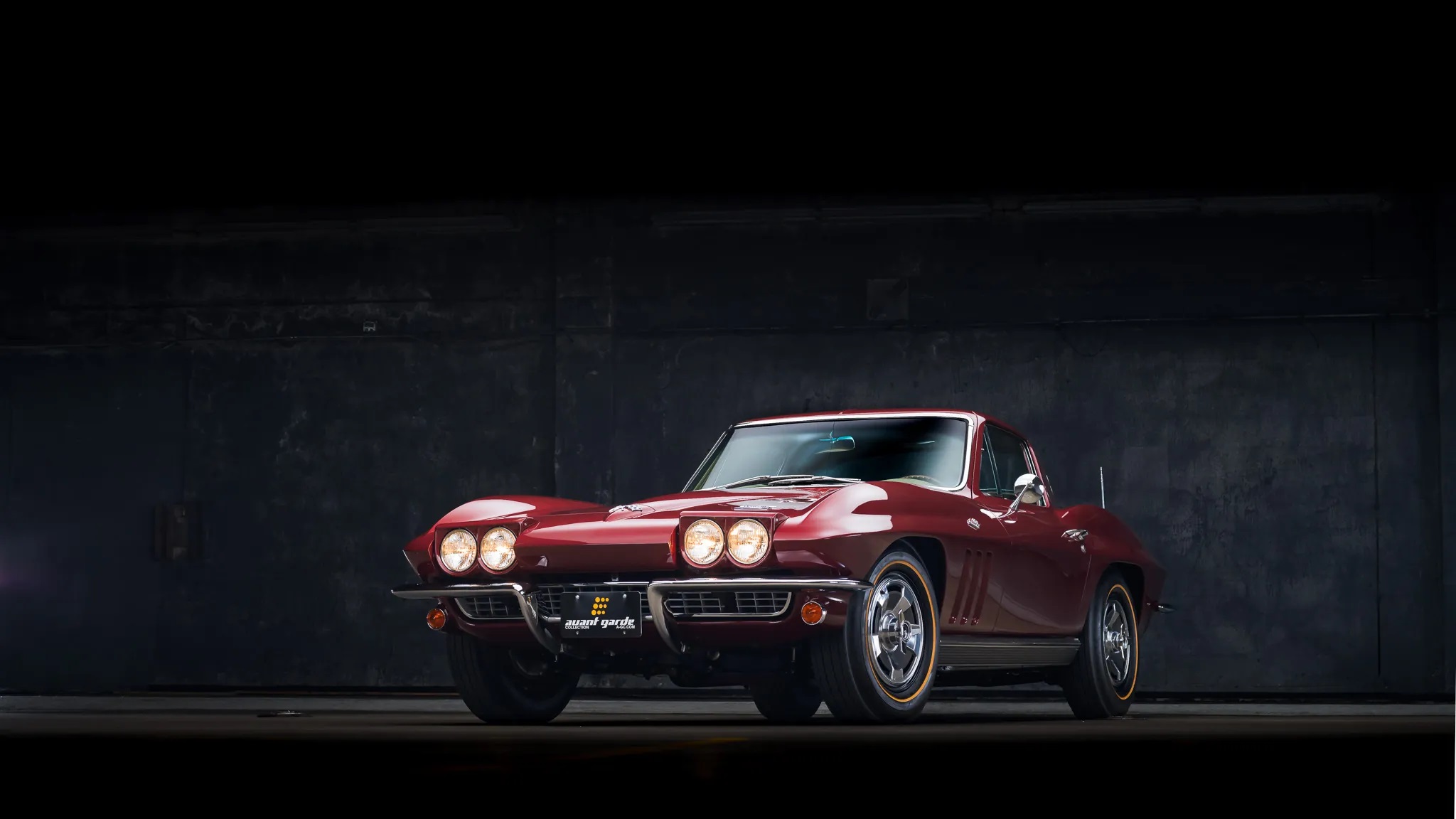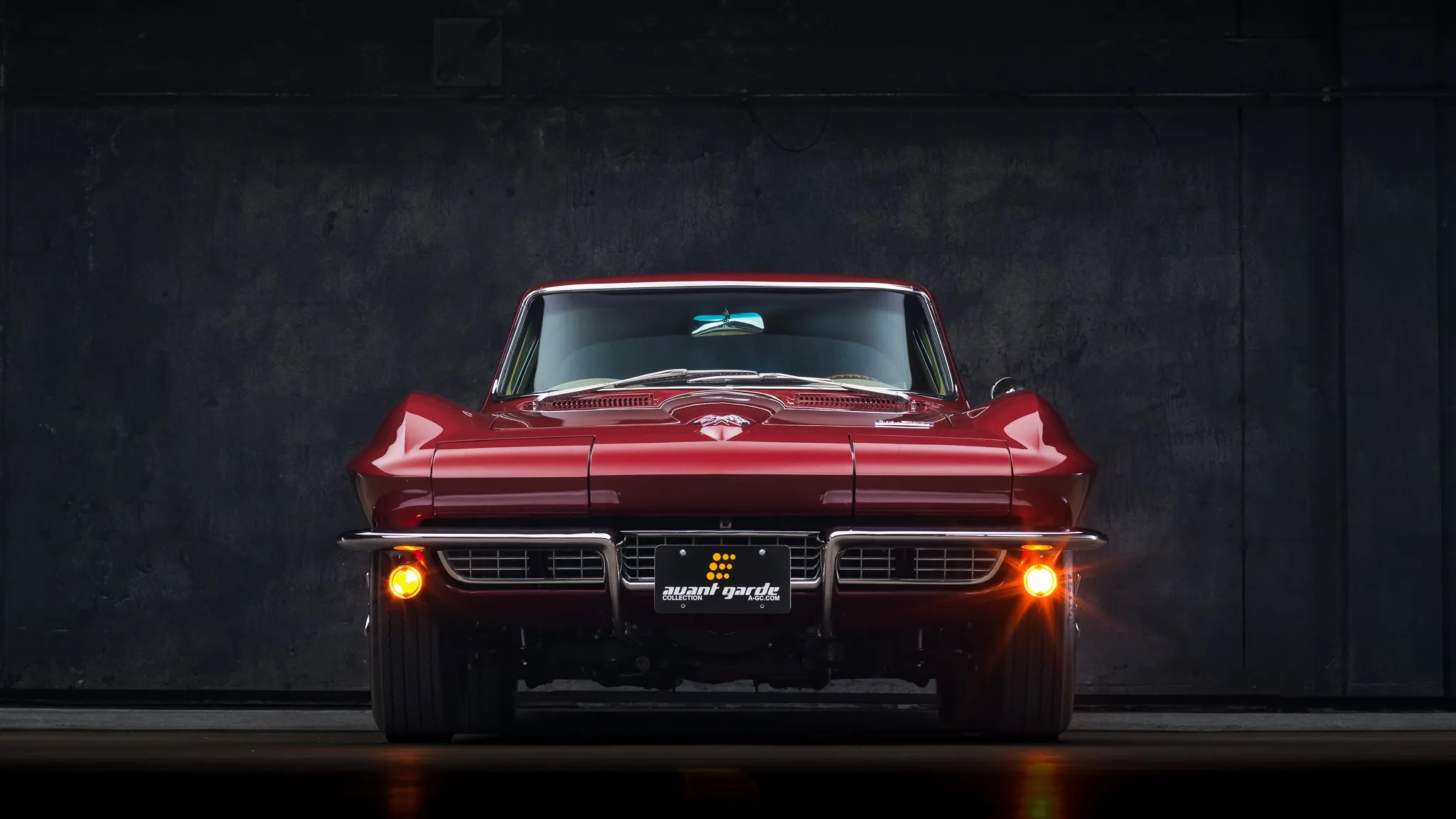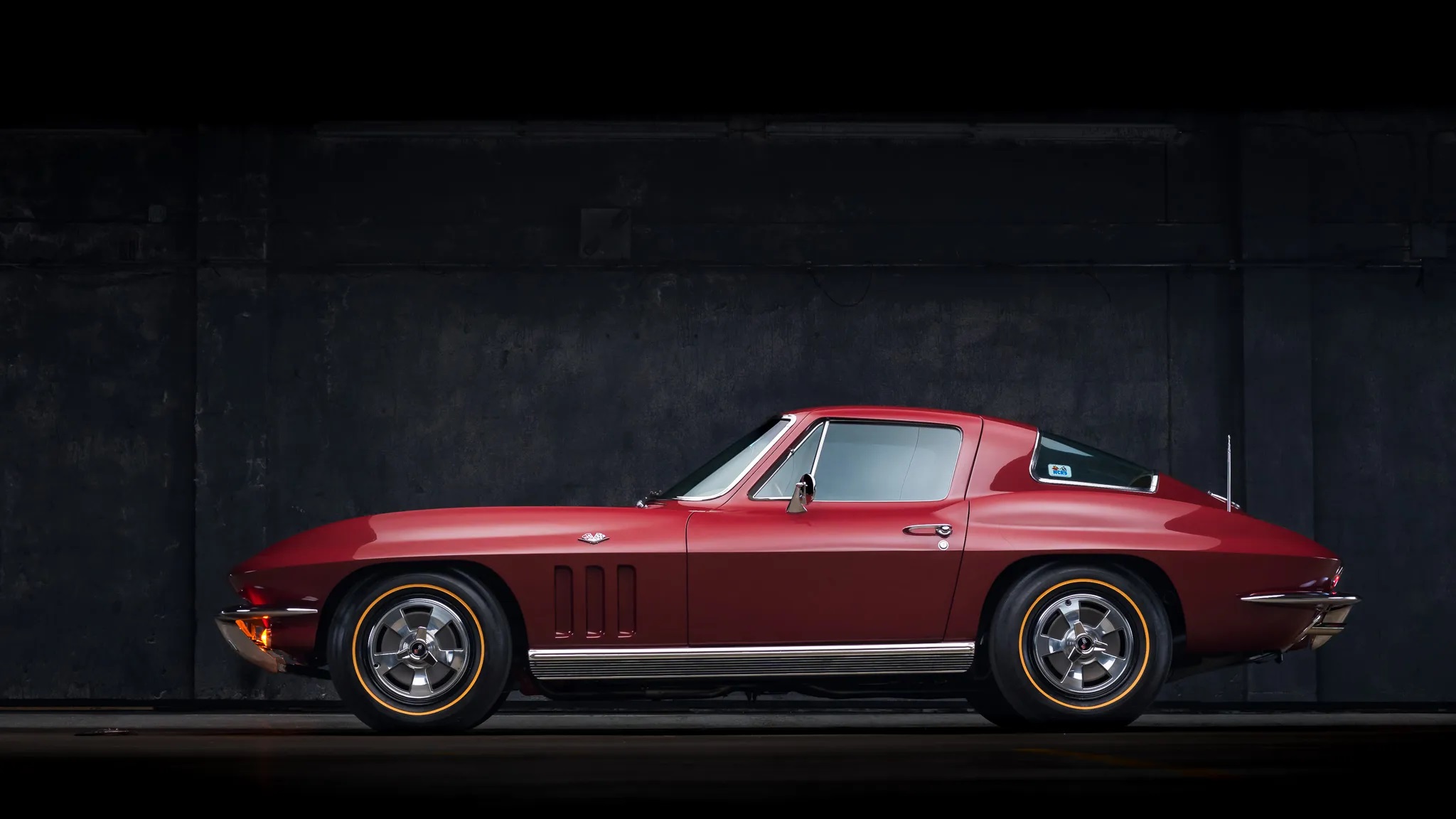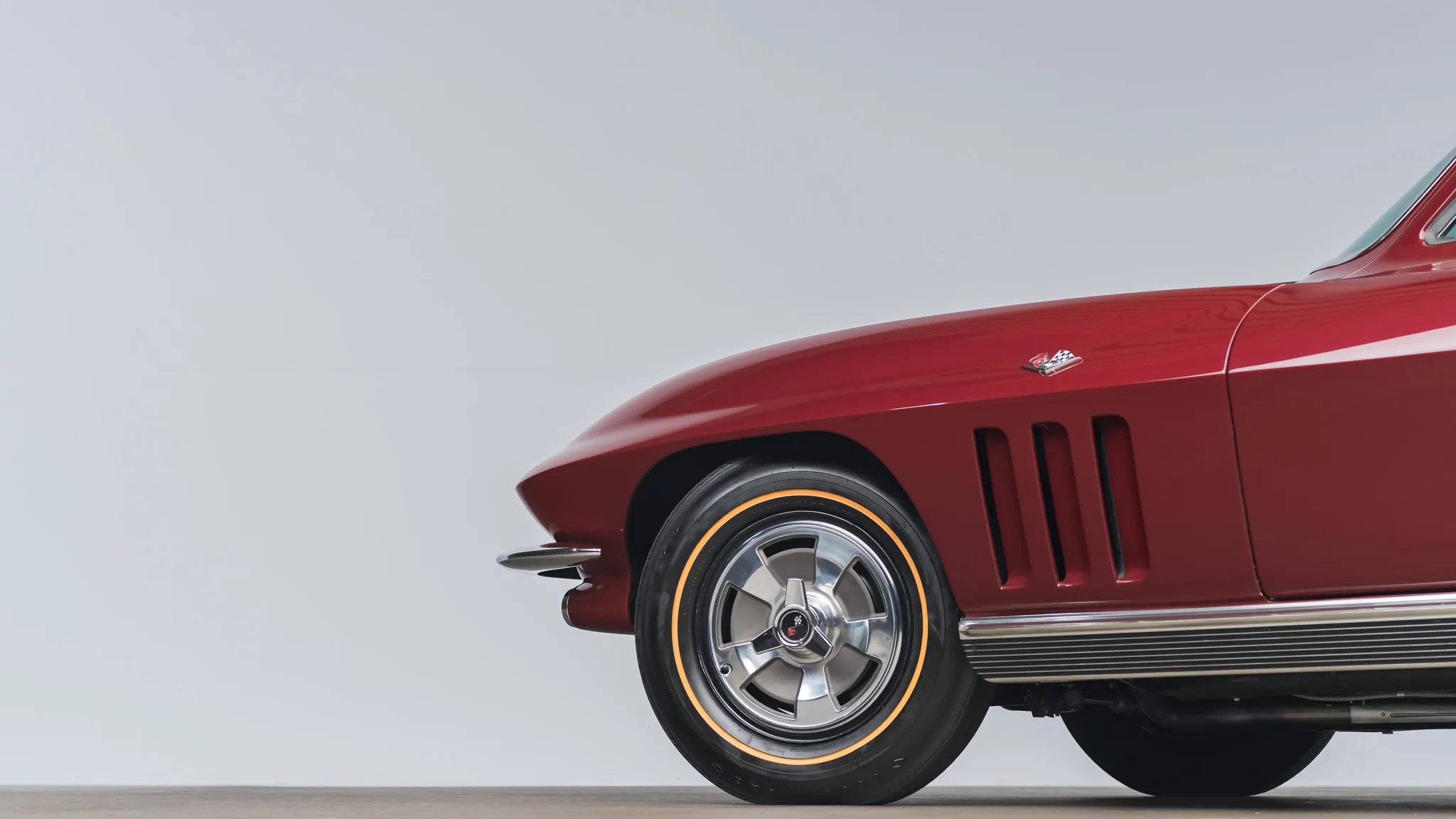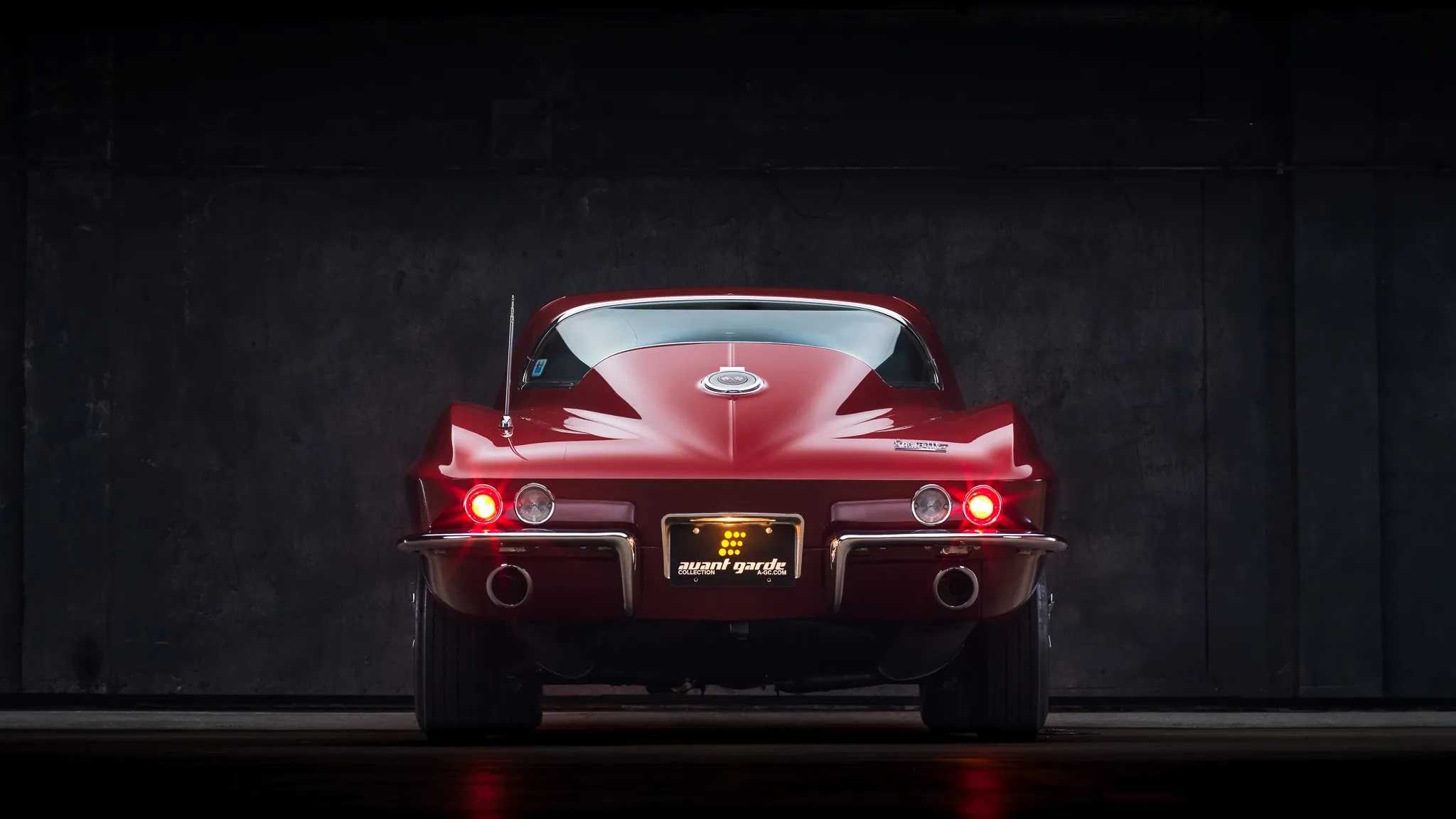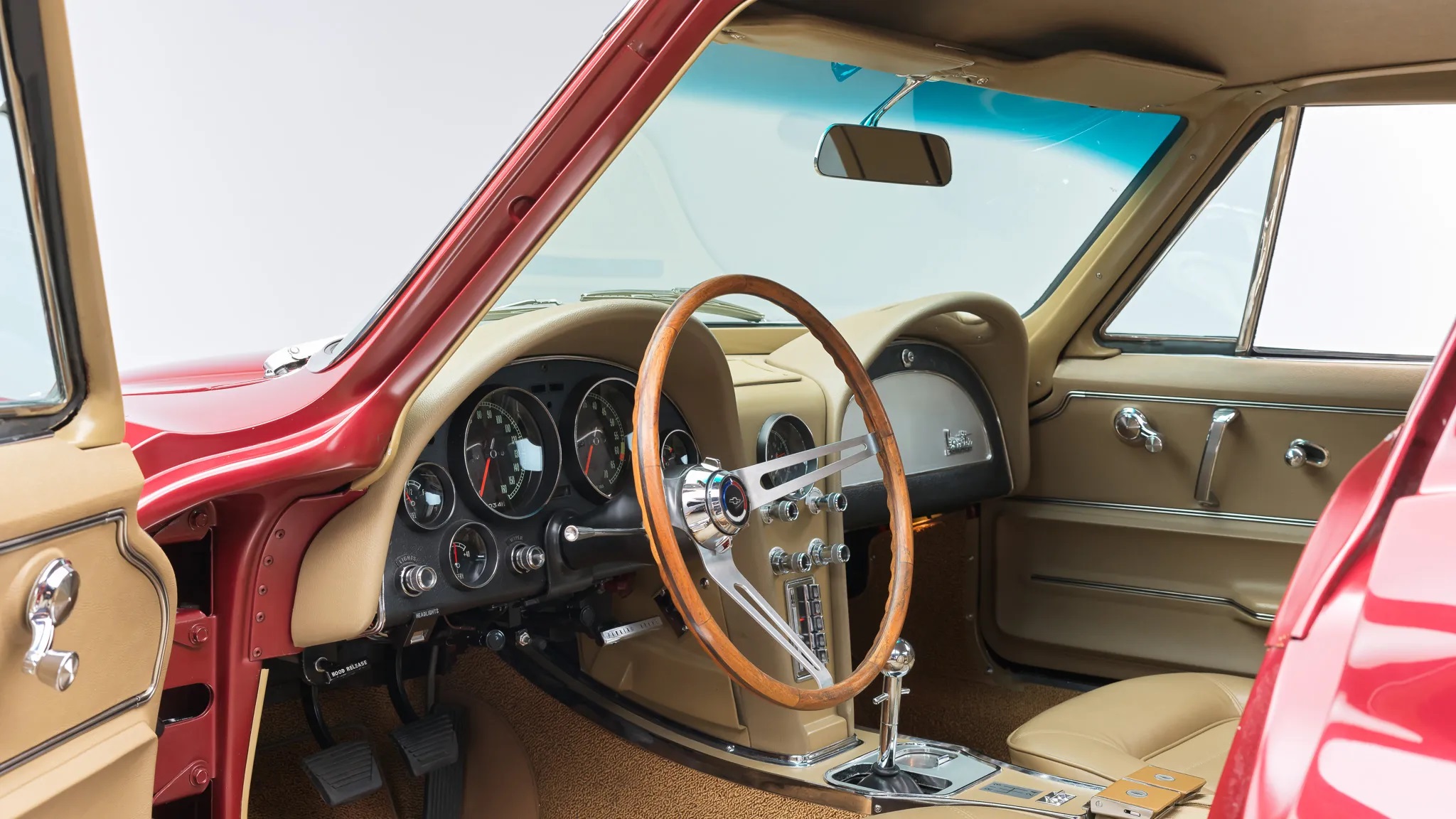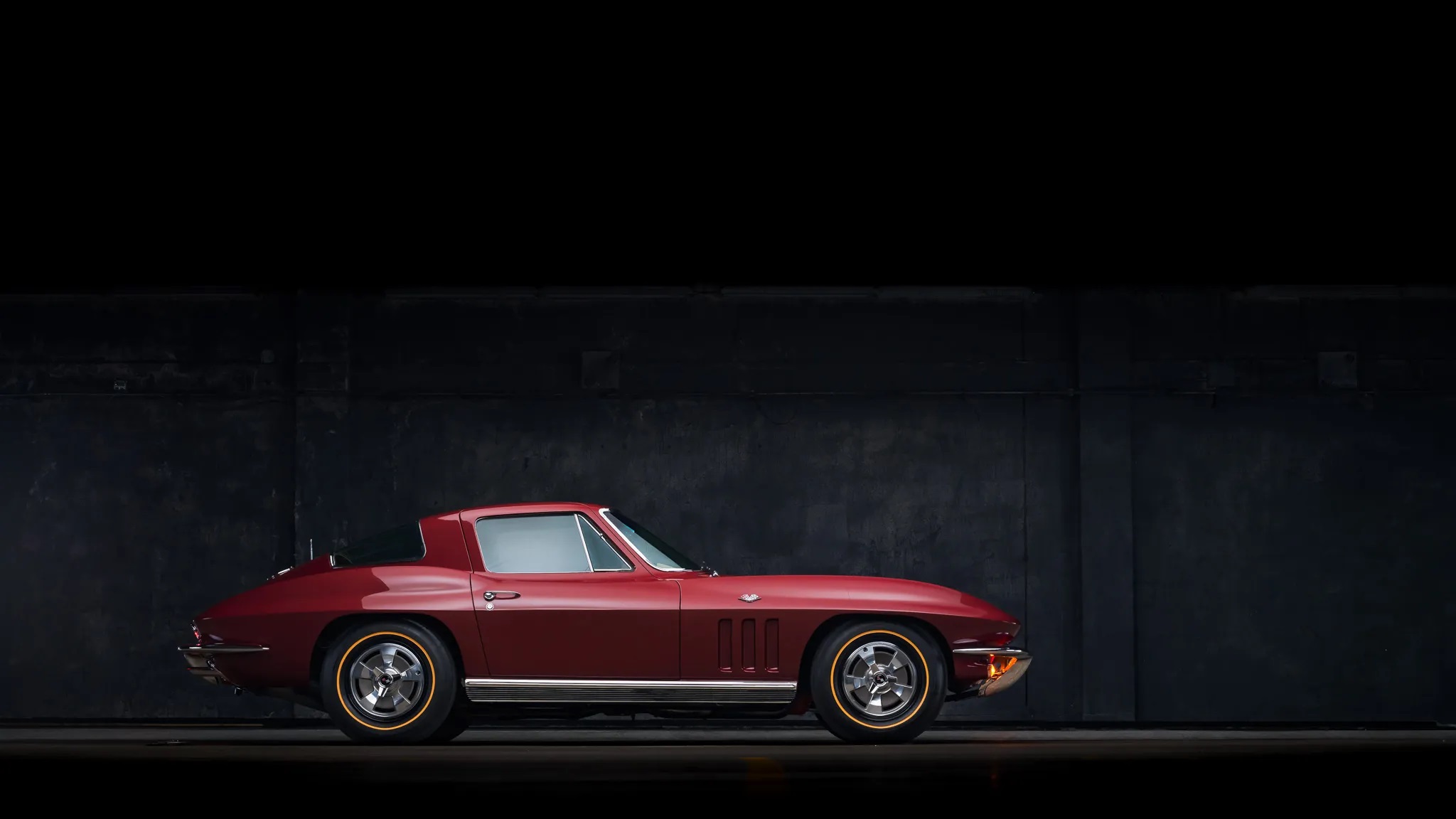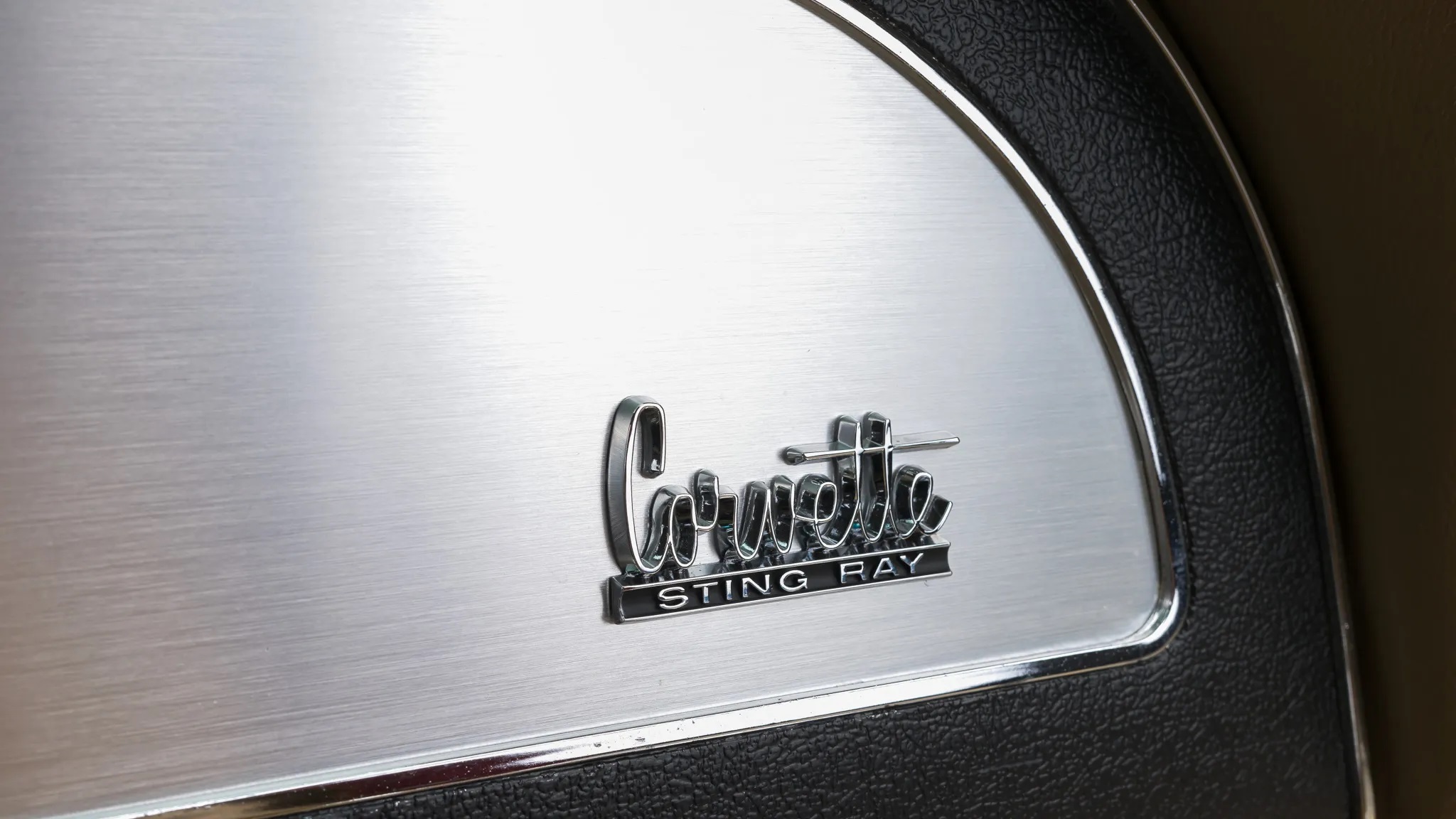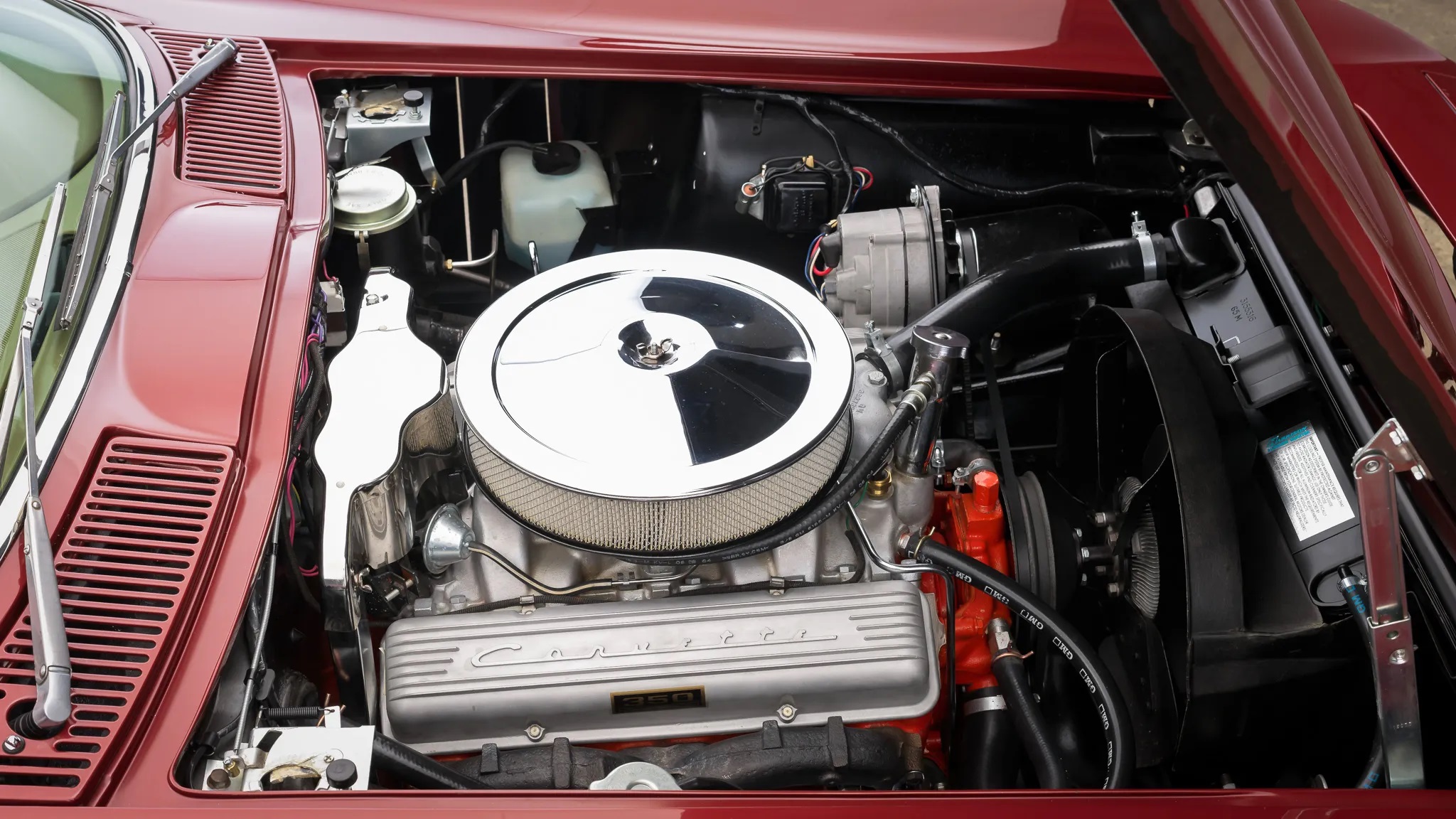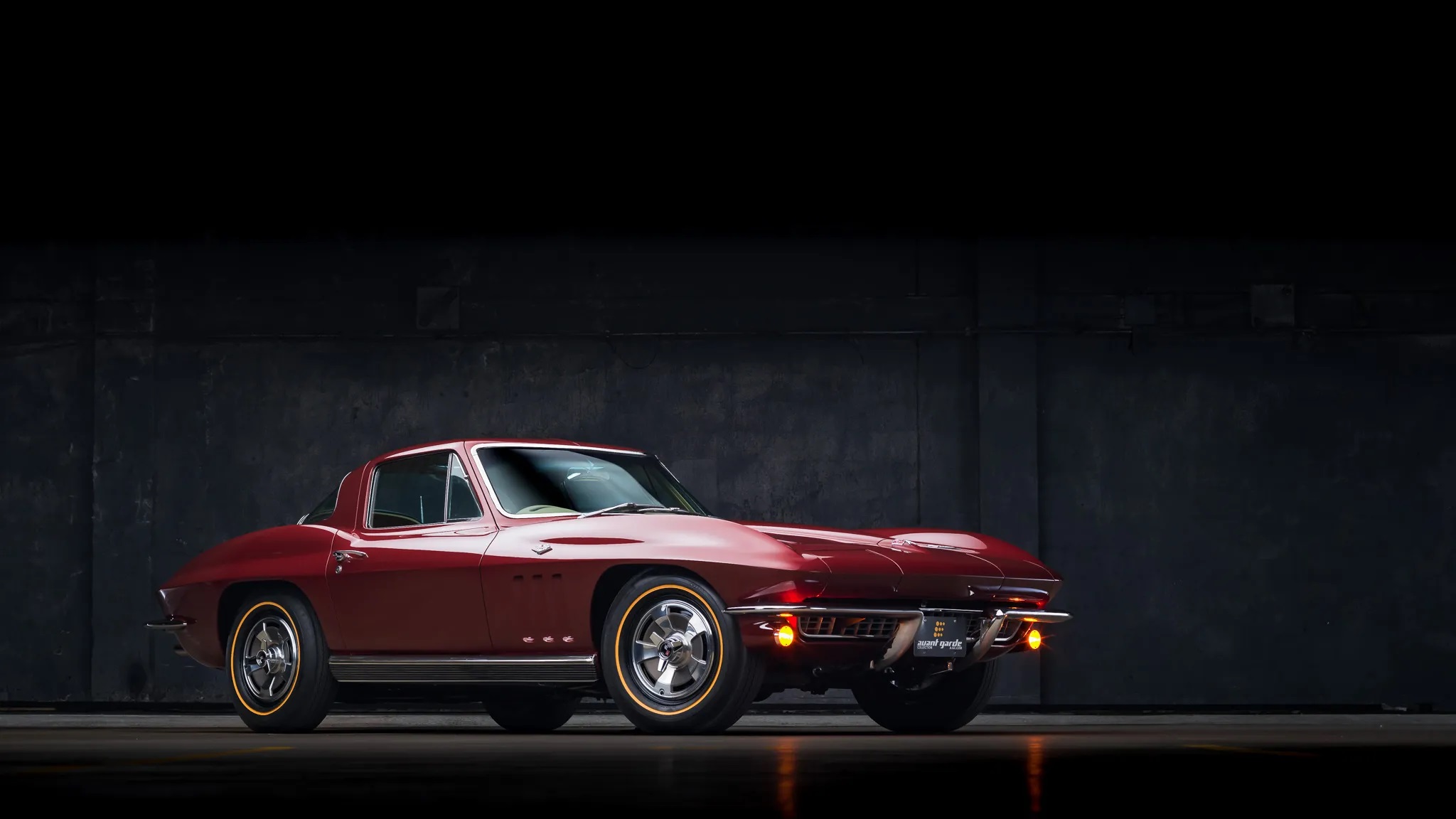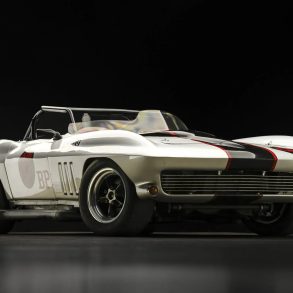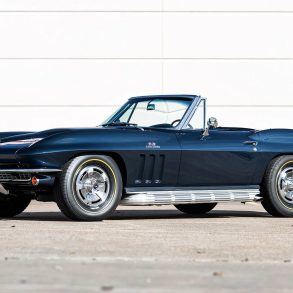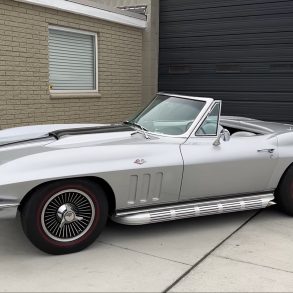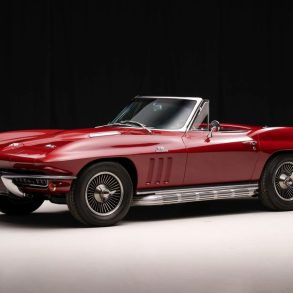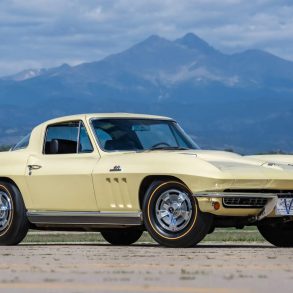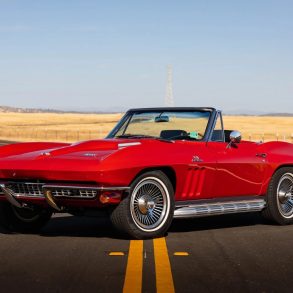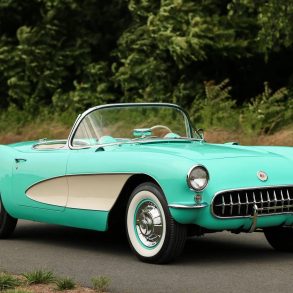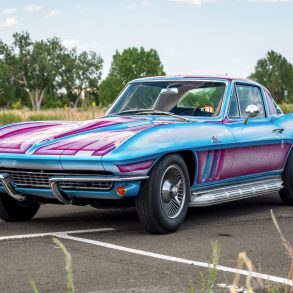The second-generation Corvette Sting Ray of 1963-67 represented a significant advancement from its launch. Its sleek and futuristic design, stemming from early sketches by Peter Brock and GM Design Chief Bill Mitchell’s SCCA Stingray racer, along with guidance from GM Designer Larry Shinoda, marked a notable departure.
In terms of mechanics, the Corvette Sting Ray offered various Chevrolet power teams, catering to buyers seeking grand touring or high-performance options. The revamped Sting Ray chassis showcased the Corvette’s evolving sophistication, incorporating fully independent suspension by 1963 and long-awaited 4-wheel disc brakes by 1965. Buyers responded enthusiastically, leading to consecutive production records from 1963 through 1966, with a total of 27,720 units built, including 17,762 Convertibles.
Featuring a factory-rated 350 HP, the formidable RPO L79 327 CI V-8 engine emerged as a popular choice among Corvette enthusiasts. Introduced in 1965 and available until 1968, it boasted a high-performance hydraulic camshaft, aluminum intake, Holley 4-barrel carburetor, and efficient cylinder heads, solidifying its reputation as one of the finest small-block performance engines ever produced.
Photo Source: Bring A Trailer


